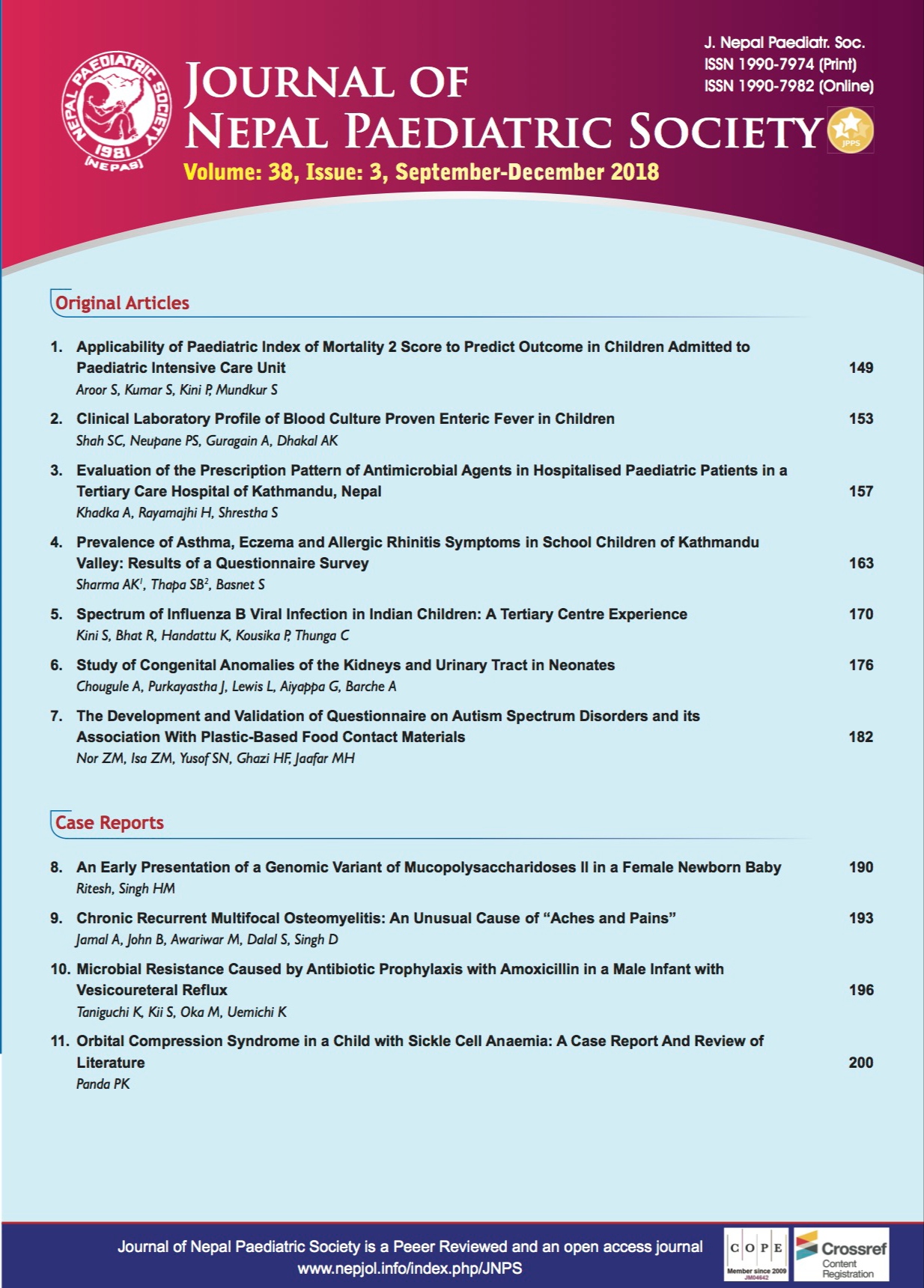Evaluation of the Prescription Pattern of Antimicrobial Agents in Hospitalised Paediatric Patients in a Tertiary Care Hospital of Kathmandu, Nepal
DOI:
https://doi.org/10.3126/jnps.v38i3.26518Keywords:
antimicrobials, amoxicillin-clavulanic acid, ceftriaxone, children, diseases, prescriptionAbstract
Introduction: Infectious diseases are one of the most frequent reasons for hospital admission for children and antimicrobials are commonly used to treat them. There is higher prevalence of irrational prescriptions of antimicrobials in such population. This study was conducted to survey the pattern of antimicrobial prescription in Paediatric inpatient.
Material and Methods: This was retrospective, descriptive, observational study. The data was collected from prescription records. The paediatric population included in the study was categorised into three age groups. A total of 87 prescriptions were studied and the information was recorded in performa. Data were recorded in MS Excel and Graph Pad Prism version 6 was used for analysis.
Results: The number of male child was outnumbered by female child. The average age of the patient on antimicrobial prescription was 5.34 ± 2.18 years. The mean duration of hospital stay was 6.17 ± 2.01 days. The common indications for antimicrobial prescriptions were upper respiratory tract infections, diarrhoeal illness, urinary tract infections, enteric fever, etc. The antimicrobials prescription rate was 1.33. Oral route was found to be commonly used than parenteral route. The generic prescription rate was 33.6%. The most common drug prescribed was ceftriaxone followed by amoxicillin + clavulanic acid, ciprofloxacin, metronidazole and amikacin. The 62.5% of antimicrobials were prescribed from National Essential List of Medicines.
Conclusion: This study highlights the prescription pattern of antimicrobial agents in hospitalised Paediatric population in a tertiary care hospital.
Downloads
Downloads
Published
How to Cite
Issue
Section
License
Authors who publish with this journal agree to the following terms:
Authors retain copyright and grant the journal right of first publication with the work simultaneously licensed under a Creative Commons Attribution License that allows others to share the work with an acknowledgement of the work's authorship and initial publication in this journal.
Authors are able to enter into separate, additional contractual arrangements for the non-exclusive distribution of the journal's published version of the work (e.g., post it to an institutional repository or publish it in a book), with an acknowledgement of its initial publication in this journal.
Authors are permitted and encouraged to post their work online (e.g., in institutional repositories or on their website) prior to and during the submission process, as it can lead to productive exchanges, as well as earlier and greater citation of published work (See The Effect of Open Access).



